|
|
|
Sort Order |
|
|
|
Items / Page
|
|
|
|
|
|
|
| Srl | Item |
| 1 |
ID:
173394
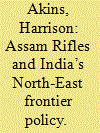

|
|
|
|
|
| Summary/Abstract |
The Assam Rifles, the oldest paramilitary group in India, was formed as a defensive force to protect tea estates from tribal raiding. Following independence, the Indian government reversed British policy in the North-East frontier to extend administrative control over tribal areas that were largely neglected under colonial rule. In aid of this policy change, the government shifted the role of the Assam Rifles to an offensive counterinsurgency force. Based on primary sources, this analysis helps to demonstrate how post-colonial states co-opt colonial institutions to reflect new policies and the use of coercive force by paramilitary groups in the state-making process.
|
|
|
|
|
|
|
|
|
|
|
|
|
|
|
|
| 2 |
ID:
173393
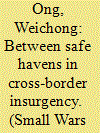

|
|
|
|
|
| Summary/Abstract |
From a local insurgent movement in the Malayan Emergency (1948–60), the Communist Party of Malaya (CPM) transitioned into a cross-border one in the Second Emergency (1968–89) with regional links and implications. Due to the fixation on the Malayan Emergency period, the transition of the CPM insurgency from local to cross border during the Second Emergency period remains underexplored. This article shows how the CPM insurgency transitioned from a local one in Peninsular Malaysia to a protracted cross border conflict with a safe haven in Southern Thailand and how this significant development allowed the CPM to set the conditions of a persistent slow burn conflict in Southern Thailand that was difficult to defeat by security operations alone. This article also addresses how Malaysia, the counterinsurgent state dealt with the unique set of challenges associated with a cross-border insurgency that was subject to the ebb and flow ‘good neighbourly’ relations with Thailand. Finally, this article examines the negotiation process and how the lessons learnt from the failure of the Baling Peace Talks in 1955 were translated into an enduring peace at Haadyai in 1989.
|
|
|
|
|
|
|
|
|
|
|
|
|
|
|
|
| 3 |
ID:
173390
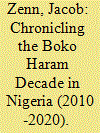

|
|
|
|
|
| Summary/Abstract |
Boko Haram videos are among the only windows into the group leadership’s ideology. However, previous studies of Boko Haram videos treated the group monolithically and neither distinguished between internal factions nor analyzed cinematographic settings in each faction’s videos. At a time when the two groups known as Boko Haram–Islamic State in West Africa Province (ISWAP) and Jamaat Ahlussunnah lid-Dawa wal-Jihad (JAS)–rival each other and combat Nigerian and subregional military forces, this article argues it is imperative to examine factions’ contrasting self-presentations in videos. While one faction led by Abu Musab al-Barnawi revealed combat skill and lectured about an Islamic state, another faction led by Abubakar Shekau revealed veneration of Shekau, masses of worshippers in group territories, and imposing sharia punishments. Even when these factions were nominally unified, they still produced media separately and competed to control communications to Islamic State. Another Boko Haram breakaway group called Ansaru also influenced Boko Haram videos after some members reintegrated into Abu Musab al-Barnawi’s faction. This article demonstrates how in jihadist groups the one wielding the camera also wields power and how jihadist videos can facilitate understanding a group’s internal dynamics.
|
|
|
|
|
|
|
|
|
|
|
|
|
|
|
|
| 4 |
ID:
173392
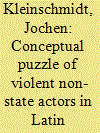

|
|
|
|
|
| Summary/Abstract |
Current research often emphasizes the typological convergence of violent non-state actors, which according to this literature tend to mix the characteristics of actors conventionally understood as criminals, insurgents, terrorists, or warlords. In this article, we examine the adequacy of such proposals to explain the evolution of violent actors in Latin America. Through a comparative study of the long-term development of two important Latin American violent actors, the Colombian FARC and the Mexican Sinaloa Cartel, we arrive at the conclusion that convergence phenomena occur with much less frequency and intensity than suggested, and when they do occur, they are caused by mechanisms typically not considered in the literature. This may indicate a significant limitation regarding the empirical reach of the convergence hypothesis as well as a need for further conceptual clarification.
|
|
|
|
|
|
|
|
|
|
|
|
|
|
|
|
| 5 |
ID:
173391
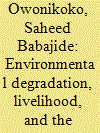

|
|
|
|
|
| Summary/Abstract |
The socio-economic conditions of the inhabitants of Lake Chad Region (LCR) in the instability of the region has been well researched. But there has been relatively little work on how environmental conditions contribute to the expanding instability of the region. Using data collected from both primary and secondary sources, this study shows how the shrinking Lake Chad contributes to the instability of the LCR. The study finds out that in the last six decades, climate change, over-exploitation and demographic pressure have contributed to the shrinking of the waterbody by over 90% leading to inability to sustain livelihoods of inhabitants. Loss of livelihoods has promoted criminality, easy recruitment by terrorist groups, migration to urban centres in search of better means of livelihood. This has also led to violent clashes and crimes in cities and towns. Furthermore, management of the shrinking lake has caused conflicts among the riparian states and this has greatly inhibited their ability to collective fight insecurity in the region. The study concludes that in enhancing the stability of the Lake Chad Region, addressing the shrinking Lake Chad must be given priority by the riparian states and other concerned stakeholders.
|
|
|
|
|
|
|
|
|
|
|
|
|
|
|
|
| 6 |
ID:
173388
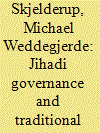

|
|
|
|
|
| Summary/Abstract |
Based on unique field work in southern Somalia, this article explores how the interrelationship between jihadi insurgent rulers and traditional authority structures fostered local order in the southernmost part of Somalia in the period 2008 to 2012. While the Jihadi insurgent group al-Shabaab’s state project was profoundly inspired by jihadi-Salafi ideology when it conquered large parts of South-Central Somalia in 2008–2009, it developed a strategy to cooperate with and co-opt local authority structures. This was partly a pragmatic approach in order to gain control of local institutions and populations. However, utilizing the local clan elders was a practical and cost-effective arrangement through which al-Shabaab could collect material resources, such as money, weapons, new recruits and other local resources. By sustaining the traditional authority structures, al-Shabaab also fostered a degree of trust and legitimacy from the local populations.
|
|
|
|
|
|
|
|
|
|
|
|
|
|
|
|
| 7 |
ID:
173389


|
|
|
|
|
| Summary/Abstract |
This study provides an empirical analysis of 79 official ISIS English-language videos and uses Quentin Skinner’s analytical approach to examine the prevalence of and changes in the speech acts used in the videos. The results show that directive, expressive, and assertive were the most common classes of speech acts and that threatening speech acts were featured most prominently. This study concludes that the fundamental semantic intention of the videos is to mobilise the addressees to align with the group’s demands and the video might serve more than simply recruitment, but as a diplomatic/negotiating tool for real-world events that ISIS faces.
|
|
|
|
|
|
|
|
|
|
|
|
|
|
|
|
| 8 |
ID:
173387
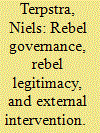

|
|
|
|
|
| Summary/Abstract |
This article focuses on rebel governance and rebel legitimacy during civil war. It investigates how external intervention in support of an incumbent government and withdrawal of external forces shape rebel legitimacy dynamics and rebels’ opportunities to govern. It adopts a longitudinal perspective on Afghanistan’s Taliban, analyzing three phases of the movement’s existence. Moral forms of legitimacy resonated particularly during instances of external intervention, whereas pragmatic forms of legitimacy became more relevant after the withdrawal of external forces and during periods of the Taliban’s opponents’ ineffective governance. The article is based on a literature review and fieldwork in Afghanistan.
|
|
|
|
|
|
|
|
|
|
|
|
|
|
|
|
|
|
|
|
|